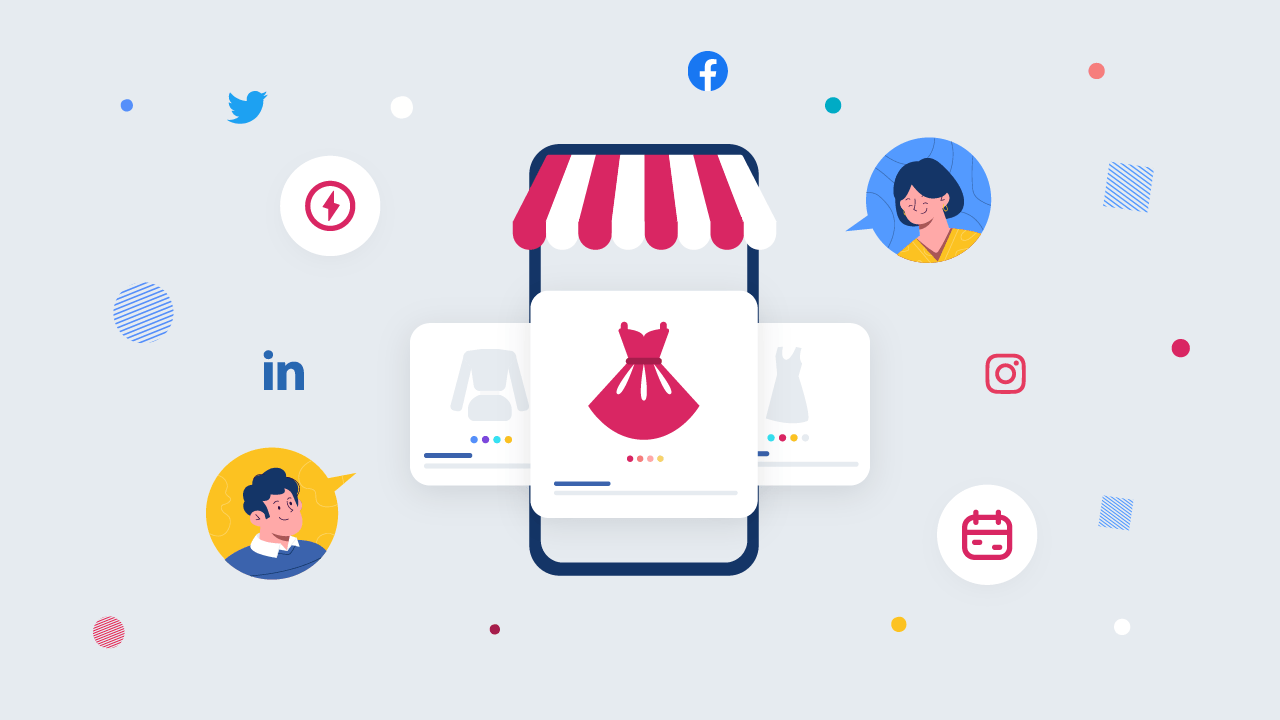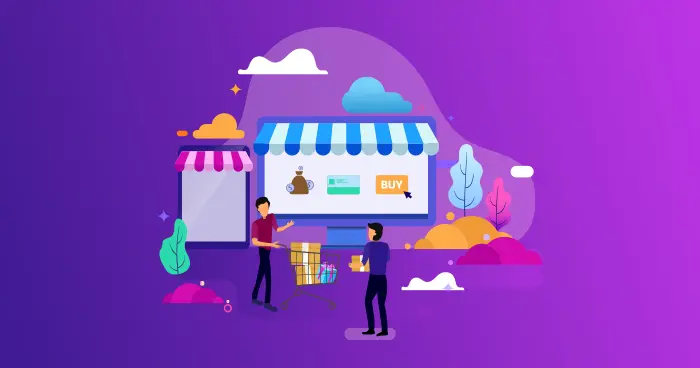Grow Your Business With Behavioral Marketing For eCommerce (Guide)
Nowadays, consumers are overwhelmed with the number of ads and content thrown in their faces on every platform, which makes it challenging for businesses to stand out. So, the million-dollar question is; how do you grab customers' attention away from other brands? Simply by using behavioral marketing for eCommerce.
Through behavioral marketing, you can offer a personalized experience to each segment or even each customer. And in the age of personalization, this is vital to the growth of your eCommerce business.
Don’t know anything about behavioral marketing for eCommerce? No worries; in this blog, we will shed light on everything you need to know before using behavioral marketing techniques for your eCommerce business.
Table of Contents
- What is behavioral marketing?
- How does behavioral marketing work?
- Behavioral Marketing segmentation
- Types of behavioral marketing
- Top 4 tactics of behavioral marketing for eCommerce
- The importance of using behavioral marketing for eCommerce
What is Behavioral Marketing?
Behavioral marketing, also known as behavioral targeting, is a method that focuses on utilizing customers’ data to create personalized experiences. This allows businesses to provide the most suitable type of content to each segment or user.
In other words, behavioral marketing is a strategy that focuses on providing unique, tailored experiences to each customer or segment based on their previous behaviors with the company.
Segmenting has been around for quite some time now, so it's important to know the difference between behavioral marketing and the traditional segmenting all businesses have been using over the past years.
Usually, segments revolve around gender, age, or income level. On the other hand, behavioral marketing focuses on the behavior of customers’ like past orders, order timings, and abandoned carts.
Needless to say, using behavioral marketing leads to having more loyal customers, increasing sales, and getting your eCommerce business on the right track in general. All that sounds great, but how can you start using behavioral marketing?
How does behavioral marketing work?

Using behavioral marketing is a simple process that starts by gathering all the data you can about your existing customers. Then using this data to personalize your online store and marketing campaigns.
Although the data each eCommerce business needs to gather may defer depending on their goals, in general, the most important things you need to know about your customers are:
- How did they learn about your online store (social media, paid ads, etc)
- Where are they located?
- How many times did they visit your website/app?
- Did they order? If yes, what products did they order, and what’s their average basket size?
- Which products did they browse or carted?
- Are they engaging with your social media accounts or emails?
Have you gathered the answers to these questions? Great, let’s take a look at how you can utilize them in segmenting your customer and start using behavioral marketing for eCommerce!
Behavioral Marketing Segmentation

Each one of the questions we previously went over serves a different type of behavioral marketing. Accordingly, you can segment according to:
-
Buyer’s Journey
Depending on how many times a customer visited your website, if they previously ordered, and which pages they browsed, you can identify where the customer is on their buyer’s journey and create a segment for each stage.
-
Geolocation
This is a straightforward approach to segmenting customers. The geolocation segment can help you present the content in the right language, offer the right local or global delivery options, and finally offer products well-suited for the customer’s region.
For example, if you sell clothes and your customer is from Canada, and it's December, you should be recommending coats. At the same time, another customer in the Middle East could benefit more from light cardigans.
-
Timing
By analyzing the customers’ order timings, you can categorize them as occasional shoppers and seasonal shoppers. You can use this to focus your marketing efforts at times when customers will actually make a purchase.
Keep in mind that seasonal shoppers may not be the bread and butter of eCommerce businesses, but they are still important and can generate a large percentage of your revenues.
-
Benefits
The same product you are offering can be purchased for completely different reasons. So by learning how customers are benefiting from your product or in simpler terms, why they are purchasing that specific product from you, then you can alter your message to highlight those benefits.
-
Traffic source
Traffic sources or, in simpler terms, how did the customer hear about you can help in shaping their whole experience. For instance, a customer that learned about you through Google search is already looking for something specific that you can place in front of them, and they will easily convert.
However, if a customer comes to your online store through a paid social media ad, you will need to highlight the benefits of the products and maybe provide some social proof to get them to make a purchase.
Now that you have successfully segmented your customers, it’s time to start using behavioral marketing!
Types of Behavioral Marketing for eCommerce
There are numerous types of behavioral marketing for eCommerce that you can choose from. In other terms, each marketing channel can benefit from behavioral marketing in its own way. With this in mind, an eCommerce business can benefit from:
1- Dynamic online store content
The content of your website or app itself can be set according to each behavior segment. This can include personalized product recommendations, language, and customized pop-ups.
2- Retargeting
Behavioral marketing is one of the best ways to retarget customers and have integrated marketing campaigns. How? Maybe a customer has looked at a certain product a couple of times; then you can have the social media ads displayed to them show that same product to give them that last push to convert.
3- Email behavioral marketing
This allows you to send real-time triggered emails that target customers in key moments and get them to convert. For example, if a customer stops shopping abruptly, then you can immediately send them an abandoned cart email with a coupon or just a persuasive message making them return to your store and finish that transaction.
4- Dynamic ads and landing pages
As previously mentioned, dynamic ads can give customers the last nudge they need to make a purchase, as it displays something they already showed interest in. But how can landing pages benefit from behavioral marketing?
The benefits that each customer expects from the product should be the first thing they see on their landing page. Additionally, a dynamic landing page should be integrated with the ads that brought them there in the first place.
5- CTA
Lastly, the call to action you include in any of the previous strategies should be personalized according to the behavior segment of the customer. This can include the tone of voice in which you word the CTA or the action itself you want them to take.
Top 4 Tactics of Behavioral Marketing for eCommerce

Like any marketing strategy, behavioral marketing has countless practices and tactics that will make you stay ahead of the competition. On that note, eCommerce businesses can benefit greatly from the following tactics!
- Deals and bundles: using behavioral targeting, you can create irresistible personalized bundles or offer exclusive deals on customers’ milestones and important events like birthdays.
- Upselling and cross-selling: personalized product recommendations can help you in persuading customers to get complementary products to the ones they already purchased. Or similar products to the one they browsed but with higher quality.
- Resolving pain points: Each segment will likely face different pain points in their journey. So you can implement intelligent chatbots or pop-ups that offer them easy solutions or navigate them to the right website pages.
- Loyalty: loyal customers are the best thing any eCommerce brand can hope for, and behavioral marketing is one of the best ways to gain loyalty. As nothing says, you care more than offering a personalized experience that fulfills the customers' needs with the least effort from their end.
The Importance of Using Behavioral Marketing for eCommerce
There are many questions every decision-maker asks themselves before trying new strategies, but it all comes down to one: is it worth it? So, is behavioral marketing worth all the hassle, and how will your eCommerce business benefit from it?
- Businesses that use behavioral lead nurturing tactics witnessed a 147% increase in CTR.
- Full or partial personalization strategies can help you increase revenue by over 75%.
- Behavioral-segmented emails have 56% higher open rates than generic ones.
- 86% of high-ROI companies reported that 21% of their marketing budget goes to personalization.
Final Thoughts
By now, you know the what, how, and why of behavioral marketing for eCommerce. But do you know that marketing operating systems like ConvertedIn can do all the work for you? In fact, it can help you:
- Learn from your customers’ data ad auto-segment
- Automate dynamic ads on multiple platforms
- Send personalized automated emails and SMSs
Book your demo now and use behavioral marketing to increase conversion, gain loyal customers, and grow your eCommerce business!
 By
By


